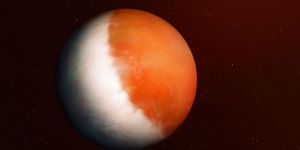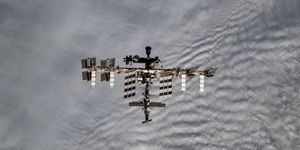NASA is working towards landing humans on the Moon in 2024, the first visit in the 21st century. This time the crew will include women as well as people of color. This work is being conducted under the name Artemis project, named for the Ancient Greek Goddess of the Moon. The idea is to eventually set up an operational base on the Moon for future launches to Mars. The biggest question or concern now is the natural availability of resources for humans who will be working on the Moon; the most important being water. It is a known fact that there are traces of water on the North and the South poles on the Lunar surface, but it is not well established whether it is abundant or not.
Geologists from the University of Alaska Fairbanks not only describe the reason for the water on the Moon but also estimate its quantity. This research, led by research associate professor Gunther Kletetschka, suggests that the hydrogen and oxygen ions escaping from our atmosphere combine on the Moon to form water (The molecular form of water contains two hydrogen atoms and one oxygen atom or H2O). These authors suggest that when the Moon passes through the Earth’s magnetosphere, estimated at about five days in a month, hydrogen and oxygen ions from the Earth are passed to the Moon. The magnetosphere is a bubble wrap of the magnetic field around our planet that shields us from harmful solar winds or other harmful stuff in space.
This has been happening for 3.5 billion years which is when our Earth was about a billion years old. All these years of accumulation led to a lot of water deposits on the polar caps of the lunar surface. These authors estimate that these regions could contain about 80 cubic miles of water created by this process. It should be noted that this is not the only source of water there. It is believed that a lot of other sources like comets, asteroids, etc. also brought quite a lot of water to our beloved natural satellite. Nonetheless, this discovery is an exciting one because it paves our way into the exploration of planets in our solar system.
Source: Scientific reports, phys.org




